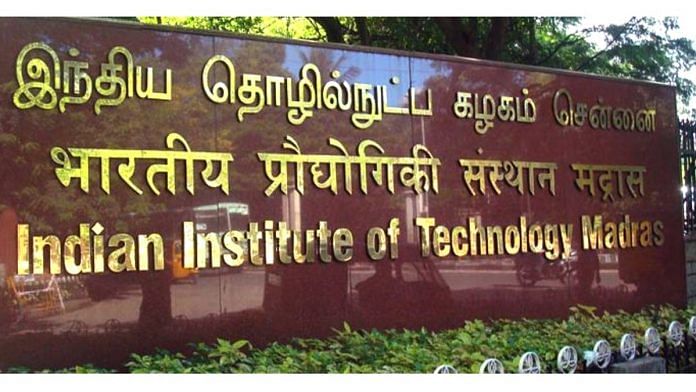New Delhi: For the third consecutive year, the Indian Institute of Technology (IIT) Madras Thursday topped the National Institutional Ranking Framework (NIRF) — the central government’s ranking for higher educational institutions in the country.
IIT Madras emerged as the top institute in the ‘Overall’ category in the ranking, followed by Indian Institute of Science (IISc) Bangalore and IIT Bombay.
IITs Delhi, Kanpur, Kharagpur, Roorkee, Guwahati along with Jawaharlal Nehru University and Banaras Hindu University made up the rest of the list.
NIRF ranks institutions under 10 categories in total — ‘Overall’, ‘University’, ‘Engineering’, ‘College’, ‘Management’, ‘Pharmacy’, ‘Law’, ‘Architecture’, ‘Medical’ and ‘Research’, which is a new category that was added this year.
IISc Bangalore topped the ‘University’ category followed by JNU, BHU, Calcutta University and Amrita Vishwa Vidyapeetham.
In the ‘Engineering’ category, IIT Madras is the top institute followed by IIT Delhi, Bombay, Kanpur and Kharagpur.
Meanwhile, Indian Institute of Management (IIM) Ahmedabad, Bangalore and Calcutta occupied the top three ranks in the ‘Management’ category.
All India Institute of Medical Sciences (AIIMS) is the best medical institution in India, according to NIRF, followed by Post Graduate Institute of Medical Education & Research, Chandigarh (PGIMER), Christian Medical College (CMC) Vellore, National Institute of Mental Health and Neurosciences (NIMHANS) Bangalore and the Sanjay Gandhi Postgraduate Institute of Medical Studies in Lucknow.
In the ‘College’ category, Miranda House in Delhi ranked as the top college in the country, followed by Shri Ram College of Commerce (SRCC), also in Delhi, and Chennai’s Loyola College as well St. Xavier’s College in Kolkata.
National Law School of India University (NLSIU) Bengaluru is the top school in the ‘Law’ category, followed by National Law University (NLU) Delhi, NALSAR Hyderabad, NUJS Kolkata and IIT Kharagpur.
IIT Roorkee, meanwhile, was designated as the best architecture college followed by NIT Calicut, IIT Kharagpur and School of Planning and Architecture Delhi.
Jamia Hamdard and IISc received the first rank in the ‘Pharmacy’ and ‘Research’ categories.
Also read: With 131 new institutions in 4 years, it’s boom time for private universities in India
Ranking parameters
Under NIRF, institutions are ranked on various parameters such as teaching, learning and resources, research and professional practice, graduation outcomes, outreach and inclusivity, and peer perception.
At the release of the rankings, Education Minister Dharmendra Pradhan said that NIRF should develop itself as a model for other developing economies to follow.
“Our ranking system is so robust that we should stand out as a benchmark for other developing nations. There is a difference between our methodology and what the others follow. In future, all developing economies should see this as a benchmark and should contact us to help them in setting their ranking framework,” he said.
The minister further spoke about the quality of education institutions in India and how India should focus on retaining its students within the country.
“Around 0.4 million students are going out to study every year and we are spending some one lakh crore rupees for that. This is a reverse challenge for our economy and we should focus on internationalisation of our education. I am giving an open invitation to all foreign institutes that want to set up their campus in India, within the regulatory framework,” he added.
(Edited by Rachel John)
This report has been corrected to reflect that NLU Delhi and IIT Kharagpur were part of the top five institutions in the ‘Law’ category. The error is regretted.
Also read: IISc world’s top research university in QS World Rankings, is 1st Indian varsity to score a 100






